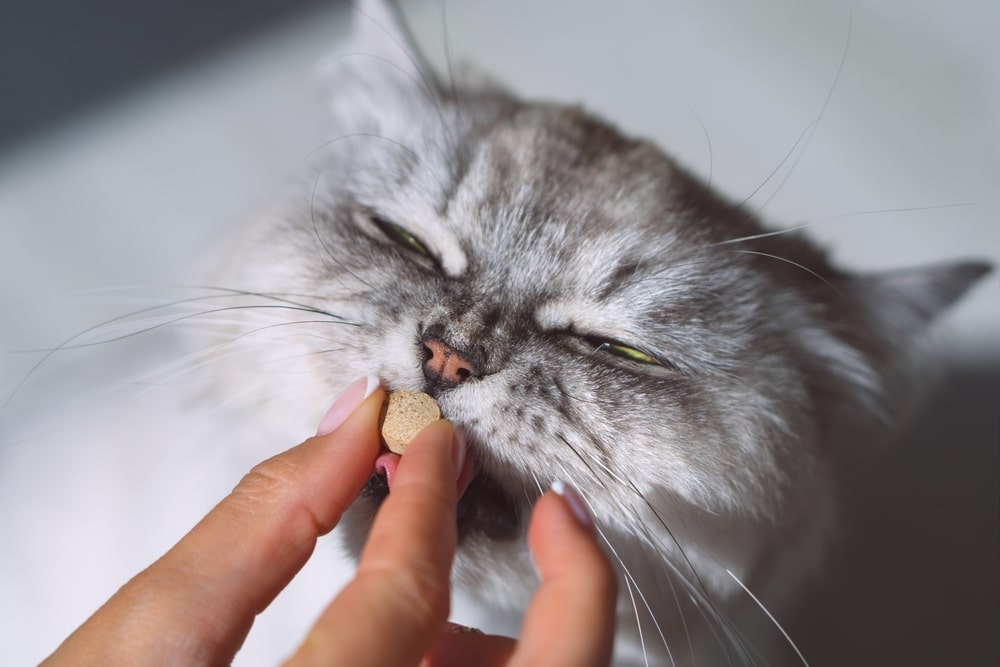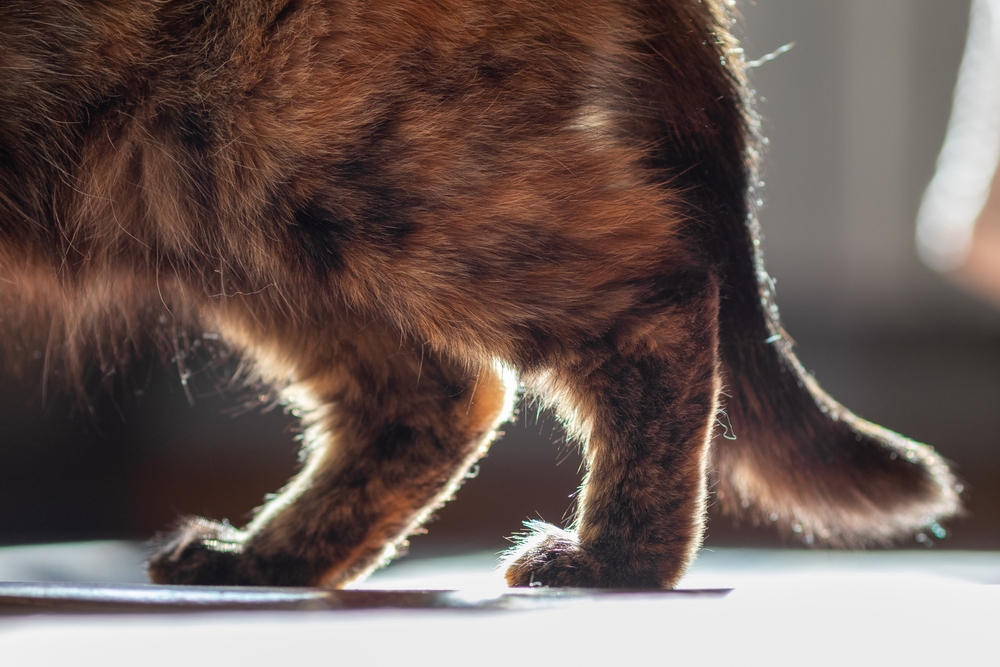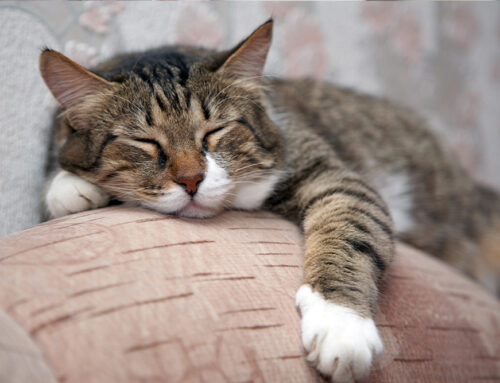You likely know arthritis is a common canine condition, but many cats also develop this painful inflammatory joint disease. Studies suggest that between 60% and 90% of cats live with arthritis pain.
Identifying arthritis pain signs can be difficult because cats are experts at disguising their discomfort. Therefore, you need to be able to recognize the subtle changes that may indicate your cat is suffering. Because we love our cat patients, our Central Kentucky Veterinary Center team is spreading the word about feline arthritis. Learn the information you need to recognize your cat’s arthritis signs, and ensure they receive the care and pain relief they deserve.
How arthritis develops in cats
Arthritis affects humans and cats alike, ravaging their joints. Cartilage cushions the impact between a joint’s bones. When a joint’s cartilage breaks down, the resultant abnormal rubbing between the joint’s bones leads to inflammation and pain. Arthritis can occur in any joint but is most commonly diagnosed in the elbows, hips, knees, and spine. Broken bone or torn ligament trauma, developmental disorders, and increased wear and tear—attributable to obesity or age—can cause a cat’s arthritis. Breeds who have a greater genetic disposition to arthritis include:
- Maine coons
- Scottish fold cats
- Persian cats
- Siamese cats
Arthritis signs in cats
Arthritis signs can be difficult to detect in cats and are far less subtle than signs in their canine counterparts. While limping is often assumed to be a clear arthritis sign, this is far less common in cats. While feline arthritis signs can vary, they often include:
- Decreased mobility — Your cat may become reluctant to jump up or down, step over their litter box rim, or use stairs. They may appear stiff when walking or jumping. Arthritic cats will naturally restrict their sore joint’s use, becoming less active and sleeping more.
- Change in temperament — Arthritis is painful, and a cat who develops an aversion to being picked up or handled may be hurting. Some arthritic cats may also hide and become less social.
- Reduced grooming — Arthritic cats may have difficulty reaching certain body areas to groom themselves, and can develop a matted coat. Other cats may overgroom sore joints and develop bald patches or sores.
- Abnormal litter box habits — Changes in your cat’s litter box habits can indicate arthritis. Stiff, painful sore hips, knees, and elbows may be the reasons for an arthritic cat’s litter box aversion, and they may relieve themself in less physically demanding locations, such as on a rug.
While arthritis is not considered life-threatening, the condition is extremely painful. Left untreated, arthritis causes chronic stiffness, range-of-motion loss, reduced mobility, and a poor quality of life. By learning to recognize subtle changes in your feline friend’s behavior, you can minimize their discomfort. If your cat is exhibiting arthritis signs, schedule an appointment with our Central Kentucky Veterinary Center team.
How is feline arthritis diagnosed?
An accurate arthritis diagnosis requires a thorough physical examination. Your veterinarian will palpate (i.e., press their fingers on) your pet’s joints to localize your feline friend’s pain and determine its intensity. Your veterinarian will also likely perform additional diagnostics, including X-rays and possibly thermography. If arthritis is suspected, your veterinarian will review your cat’s medical history, and complete their physical examination by looking for the following:
- Visible joint deformity
- Joint pain
- Decreased range of motion
- Grating (i.e., scraping) noise when a cat moves their joints
- Joint fluid
- Joint instability
If your cat has been diagnosed with arthritis, the treatment goal is pain management and mobility maintenance. Your veterinarian wants to ensure your cat can continue to enjoy normal activities and a good quality of life.
Can arthritis be treated in cats?

Feline arthritis cannot be cured or reversed. However, treatment options are available to manage their pain and slow disease progression. Feline arthritis treatment may include:
- Weight-loss plan
- Pain medication
- Supplements
- Alternative therapies
- Surgery
After having few treatment options for feline arthritis, an amazing new medication, Solensia, was recently released. We have seen significant improvement in arthritic cats, and are excited about how this medication can improve the quality of life for our feline patients.
Don’t let your cat suffer in silence. Watch for your feline friend’s discomfort signs. If you suspect your cat has arthritis, and you have questions about whether Solensia can help, schedule an appointment with our Central Kentucky Veterinary team to help ensure your cat can enjoy a good quality of life.







Leave A Comment